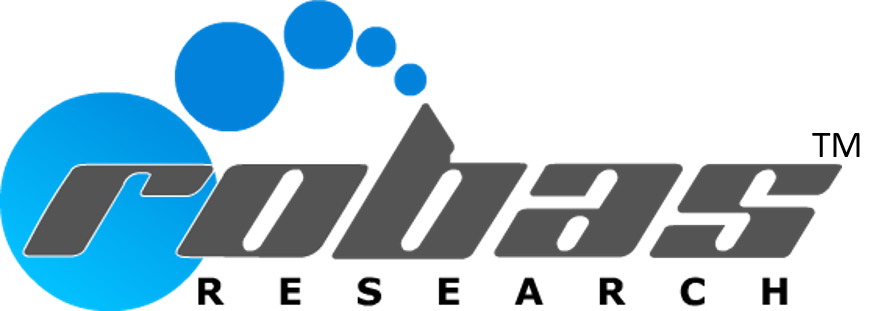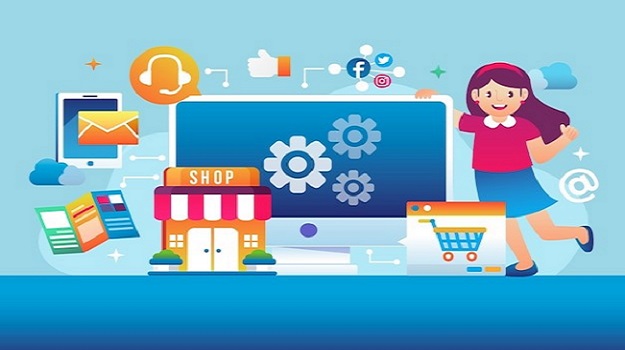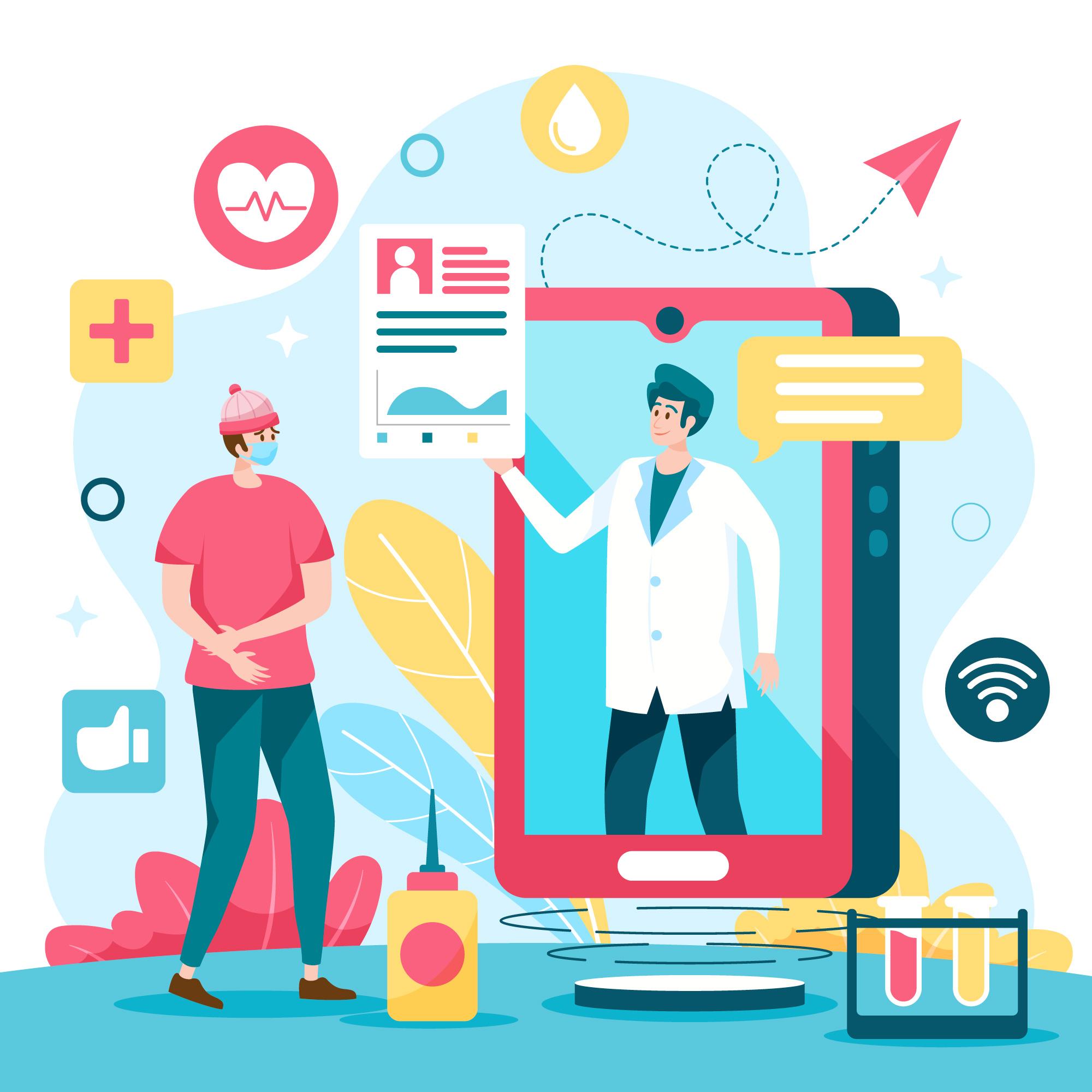
Top 22 Healthcare Trends in 2024 and Beyond
Do you know these statistics in Healthcare Tech Trends? Let me share some of the important ones worldwide.
According to the World Health Organization (WHO), the global population is expected to reach 9.8 billion by 2050 (source: WHO).
The global healthcare chatbots market is projected to reach USD 314.3 million by 2023, growing at a CAGR of 20.8%. (Source: Markets and Markets).
The number of IoT devices in healthcare is expected to reach 646 million by 20243.
The global Internet of Medical Things (IoMT) market is expected to swell to a $158 billion valuation in 2022, up from $41 billion in 2017.
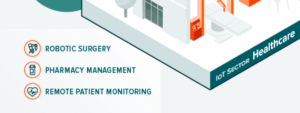
Figure: IoT in Healthcare (Source: IITK Knowledge Hub)
The global healthcare blockchain market is projected to reach USD 829.0 million by 2023, at a CAGR of 72.8%.
So, the key healthcare trends in 2024s are evolving rapidly, and new technologies: AI, IoT, Blockchain, Digital Analytics, Healthcare Analytics, Health Wearables, Digital Twins, Prioritizing Mental Health, Digital Twins, preventive healthcare, Virtual Healthcare Assistants, Telemedicine, Nanomedicines and many others are emerging to revolutionize the industry. The focus will be on providing value-based care, improving patient outcomes, reducing patient attrition, costs and increasing patient engagement.
Medical trends in 2024 and beyond to watch out for: This includes virtual healthcare assistants, health wearables, preventive healthcare, and blockchain. Not just this, 2024 key medical trends or key 2024 Healthcare trends also include digital analytics, healthcare analytics, digital twins, and mental health.
In this blog, we will explore the top 25 healthcare trends of 2024 and beyond, including telehealth, AI and machine learning in diagnostics, blockchain for health data security, genomic medicine, wearable health tech, and more. We will also discuss the pros and cons of these trends and what they mean for patients and healthcare providers. Finally, we will provide a meaningful and informative conclusion based on all the above data points. So, let’s dive in and explore the future of healthcare together!
- IoT in healthcare: IoT is expected to play a significant role in healthcare in the coming years.
IoT-enabled medical devices, remote patient monitoring, and smart hospitals are some of the areas where IoT is already making a significant impact.
- Blockchain in healthcare: Blockchain is a distributed ledger technology that can be used to store and share healthcare data securely. Blockchain is expected to play a significant role in healthcare in the coming years. Examples of IoT and Blockchain in Healthcare include drug traceability, remote patient monitoring, medical record management, and IoT security for remote monitoring
- Virtual healthcare assistant | Role of AI in healthcare: Virtual healthcare assistants are AI-powered chatbots that can provide patients with personalized healthcare advice. Examples of companies that produce virtual healthcare assistants include HelloRache, VA.care, Medva, Cool Blue VA, Mountain Mover, Virtual Nurse Rx, Express Virtual Assistant, Medphine, Mediator, and SOAP. Role of AI in healthcare has disrupted the current healthtech industry and today AI is being used not just as a chat bots, but also creative meaningful reports based on patient data, AI + IoT being used in patient regular care, vital monitoring, predicting next step in diagnosis based on tests, medicine and patient’s current response with these and more…
Also, read the best use cases in Generative AI you must know in Healthcare.
- Health wearables: Health wearables are devices that can monitor a patient’s health and provide real-time feedback. Examples of health wearables include smartwatches, fitness trackers, and biosensors. According to Statista, almost 50% of adults aged between 35 years and 44 years in the United States reported they used and owned a wearable fitness or wellness device (like a Fitbit, Garmin, or smartwatch) designed to track vitals such as blood pressure, heart rate, sleep patterns, and physical activity. However, a study by the American Heart Association found that age, education, and income are factors associated with less use of wearable health devices among people with and at risk for cardiovascular disease
- Preventive healthcare: Preventive healthcare is an approach that focuses on preventing diseases before they occur. Some examples of preventive healthcare include cancer screenings, annual checkups, childhood and adult immunizations, and annual flu shots.
- Digital analytics in healthcare: Digital analytics is the process of analyzing digital data to gain insights into patient behavior. According to Grand View Research, the global digital health market was valued at USD 175.43 billion in 2021 and is expected to grow at a CAGR of 27.4% during the forecast period. The market is expanding due to improvements in the healthcare IT infrastructure, increasing medical costs, which has rapidly boosted the demand for digital well-being. Examples of digital analytics in healthcare include patient management, retention, and better care delivery.
- Healthcare analytics: Healthcare analytics is the process of analyzing healthcare data to gain insights into patient behavior. According to Grand View Research, the global healthcare analytics market size was valued at USD 43.1 billion in 2023 and is expected to expand at a compound annual growth rate (CAGR) of 21.1% from 2024 to 2030. Examples of healthcare analytics include data analytics solutions, software, and a technology-advanced healthcare platform.
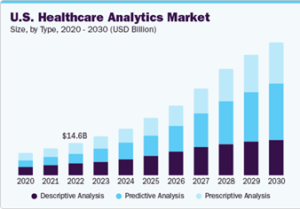
Figure: USA Healthcare Analytics Market Size and CAGR 2020-2030
- Digital twins: Digital twins are virtual replicas of physical objects that can be used to simulate real-world scenarios. Applications of digital twins include simulating surgical procedures, predicting equipment failures, and optimizing patient care.
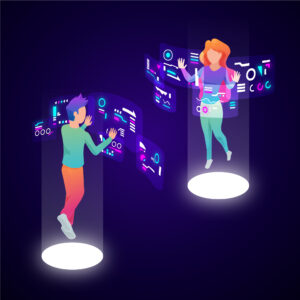
Figure: Digital Twin
- Mental health: Mental health is an area that is expected to receive more attention in the coming years. AI-powered chatbots, telemedicine, and virtual reality are some of the areas where technology is expected to make a significant impact. Apps that track the mental health of humans and patients: There are several apps that track the mental health of humans and patients, including Headspace, Calm, Moodfit, and Pacifica. These apps can help users manage stress, anxiety, and depression.
- 3D print: 3D printing is a technology that can be used to create customized prosthetics, medical devices, and implants.
- EHR Systems: EHR systems are electronic health record systems that can be used to store and share patient data securely. There are various types of EHR systems available in the medical world today, including cloud-based EHR platforms like athenahealth, DrChrono, EpicCare, CernerAmbulatory, and eClinicalWorks.
While introducing the technology has been costly, different types of EHR platforms have revolutionized patient data storage. Leveraging EHRs, healthcare organizations of all sizes are improving their caregiving techniques and reducing unnecessary costs. However, choosing the right EHR solution for your clinic is of paramount importance. While the right product will streamline processes and help physicians deliver better care, the wrong one can disrupt your services
- Data: Data is the lifeblood of the healthcare industry. The ability to collect, store, and analyze data is critical to improving patient outcomes and reducing costs. Applications of data in healthcare include predictive analytics, personalized medicine, and drug discovery.
- Immersive technologies | Virtual Reality and Augmented Reality in Healthcare: Immersive technologies such as virtual reality and augmented reality can be used to train healthcare professionals, provide patients with immersive experiences, and improve patient outcomes.
- Nanomedicine: Nanomedicine refers to the use of nanotechnology in healthcare. Nanotechnology means working with materials at the nano level – a scale too small to be seen with a regular lab microscope. A nanometer equals one-millionth of a millimetre. That’s thousands of times smaller than the diameter of a human hair. In nanomedicine, scientists are creating materials and devices that work with your body at the atomic or molecular level. This allows for very specific, targeted results and has the potential to limit side effects[1].
Some examples of nanomedicines are COVID-19 vaccines: Nanoparticles are a key element of two of the COVID vaccines, those from Pfizer and Moderna. Those vaccines use messenger RNA (mRNA) to help you develop immunity to the COVID-19 virus.
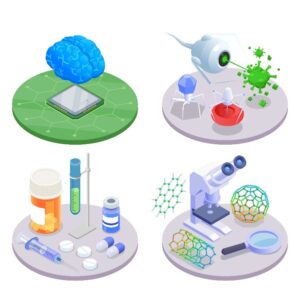
Figure: Nanomedicine
- Protecting health data from cybercrime or data breach: Protecting health data from cybercrime or data breach is critical in safeguarding sensitive patient information and avoiding costly repercussions. Some examples of applications include data encryption, two-factor authentication, firewalls, and intrusion detection systems. Some of the apps that are examples of these include Norton Mobile Security, Avast Mobile Security, and Kaspersky Mobile Antivirus.
- Digital pathology: Digital pathology is a sub-field of pathology that focuses on data management based on information generated from digitized specimen slides. Applications of digital pathology include primary and secondary clinical diagnosis, telepathology, slide sharing, research data set development, and pathology education or teaching. Some of the apps that are examples of these include PathAI, Proscia, and Paige.AI.
- Telemedicine: Telemedicine allows you to discuss medical issues with a doctor by phone or online at a time that’s convenient for you. It simplifies the process of receiving treatment for many common ailments and can be a good option for people with limited time, healthcare options, or other accessibility issues. Telemedicine often provides lower pricing for services and can be a cost-effective way for people who do not have insurance or people with insurance that does not cover certain costs to get care. Some of the apps that are examples of these include Teladoc, MDLive, and HealthTap.
- Medical diagnostics: Medical diagnostics are a category of medical tests designed to detect infections, conditions, and diseases. Applications of medical diagnostics include diagnosis, treatment, research, and education. Some of the apps that are examples of these include Ada, Medscape, and VisualDx.
- Medical transformation: Medical transformation refers to the use of technology to improve healthcare outcomes, reduce costs, and enhance patient experiences. Applications of medical transformation include AI, IoT, blockchain, and wearables. Some of the apps that are examples of these include HealthTap, Ada, and Medscape.
- Digital transformation in healthcare: Digital transformation in healthcare refers to the use of digital technologies to improve healthcare outcomes, reduce costs, and enhance patient experiences. Applications of digital transformation in healthcare include telemedicine, digital pathology, medical diagnostics, and medical transformation. Some of the apps that are examples of these include Teladoc, PathAI, Ada, and HealthTap.
- Improved communication between patients and providers: Improved communication between patients and providers is critical to improving healthcare outcomes and enhancing patient experiences. Applications of improved communication between patients and providers include telemedicine, patient portals, and mobile health apps. Some of the apps that are examples of these include Teladoc, MyChart, and HealthTap.
- Personalized medicine: Personalized medicine is an approach that focuses on providing customized medical care based on an individual’s unique genetic makeup, lifestyle, and environment. Applications of personalized medicine include genomics, pharmacogenomics, and precision medicine. Some of the apps that are examples of these include 23andMe, MyFitnessPal, and Medisafe.
Conclusion – The future of healthcare
The future of healthcare is expected to be shaped by emerging technologies such as artificial intelligence (AI), the Internet of Things (IoT), and blockchain. Due to the explosion in the global population (to reach 9.8 Billion in 2050). The healthcare industry is expected to witness significant changes in the coming years, with a focus on providing value-based care, improving patient outcomes, and reducing costs.
In the future, we can expect healthcare to be more personalized, preventive, and precise. AI and IoT are expected to play a massive role in healthcare in the coming years. AI is expected to disrupt the healthcare industry in many ways.
AI-powered diagnostics, personalized medicine, and drug discovery are some of the areas where AI is expected to make a significant impact.
Blockchain is a distributed ledger technology that can be used to store and share healthcare data securely. Blockchain is expected to play a significant role in healthcare in the coming years.
Other latest healthcare technology trends in 2024 and beyond that are expected to shape the future of healthcare include virtual healthcare assistants, health wearables, preventive healthcare, digital analytics, healthcare analytics, digital twins, mental health, 3D printing, EHR systems, explosion of healthcare data, immersive technologies, nanomedicine, medical transformation, medical diagnostics, data breach, and cybercrime, digital transformation, telemedicine, digital pathology, improved communication between provider and patients, VR/AR in healthcare, immersive technologies, and personalized medicine.
Would you like to know more about healthcare studies and market research projects Robas has performed? With the widest reach of online healthcare panels, Robas helps healthcare companies, and other market research companies globally to identify accurate data and insights by performing end-to-end healthcare projects from conceptualization to design and methodology, execution with quality and on-time delivery with 24/7 assistance.
Frequently Asked Questions of Healthcare Trends in 2024 and Beyond
Here are some of the top FAQs and their answers on healthcare trends:
- What is telehealth?Telehealth is the use of digital communication technologies to provide healthcare services remotely. This includes video conferencing, remote monitoring, and mobile health apps.
- What is blockchain?Blockchain, on the other hand, is a distributed ledger technology that can be used to store and share data securely. It is used in healthcare to store and share patient data securely. By using blockchain, healthcare providers can ensure that patient data is secure and cannot be tampered with. This can help to improve patient outcomes and reduce costs.
- What is blockchain?Blockchain is a distributed ledger technology that can be used to store and share data securely. It is used in healthcare to store and share patient data securely.
- What is AI?AI stands for artificial intelligence. It is a technology that enables machines to learn from data and make decisions without human intervention.
What are health wearables? Health wearables are devices that can monitor a patient’s health and provide real-time feedback. These devices include smartwatches, fitness trackers, and biosensors. According to Statista, nearly half of adults aged between 35 and 44 in the United States reported owning a wearable fitness or wellness device designed to track vitals such as blood pressure, heart rate, sleep patterns, and physical activity
